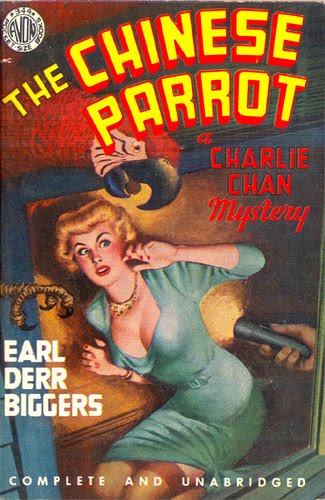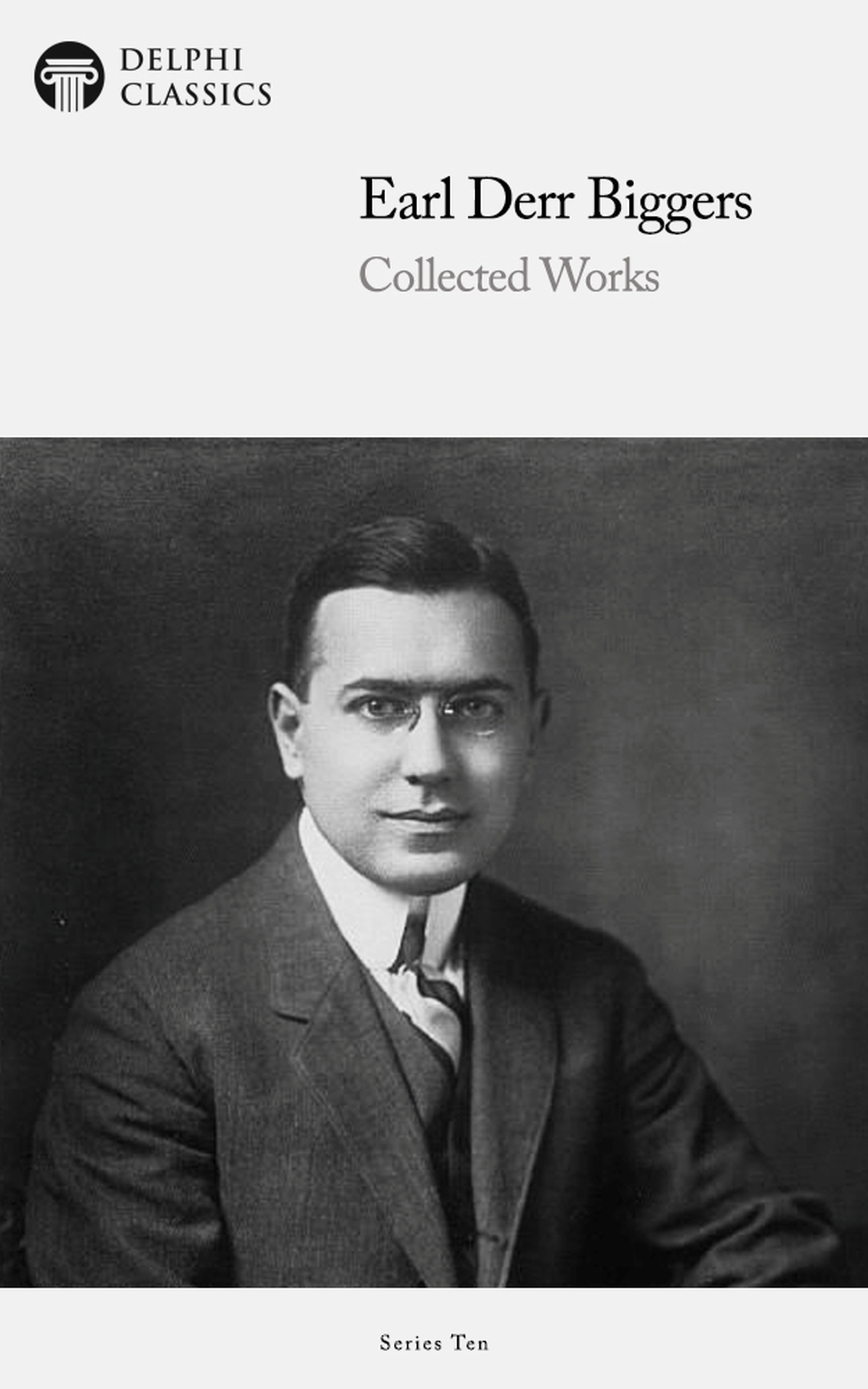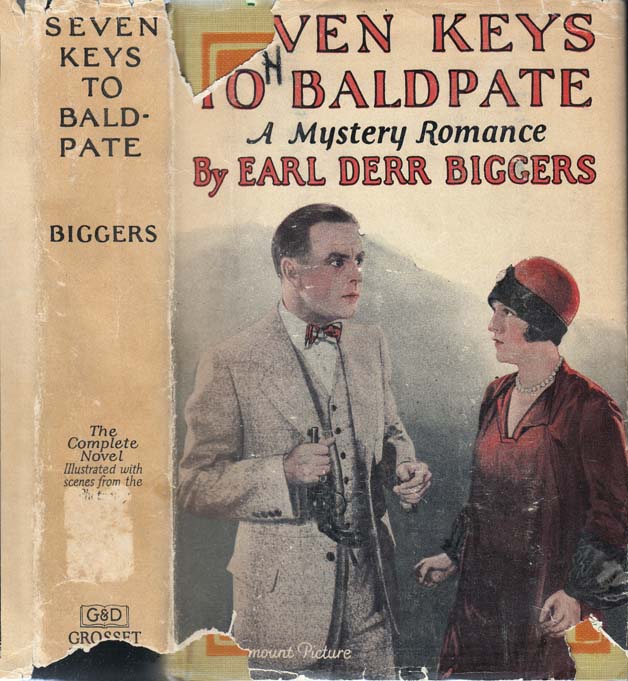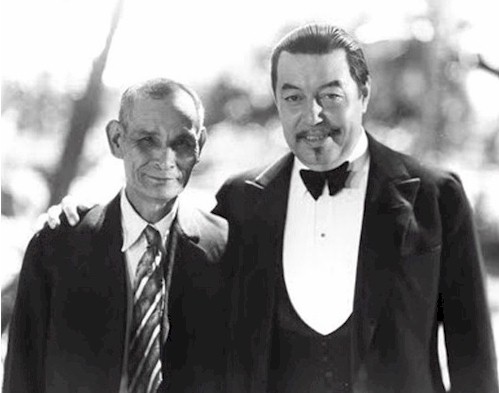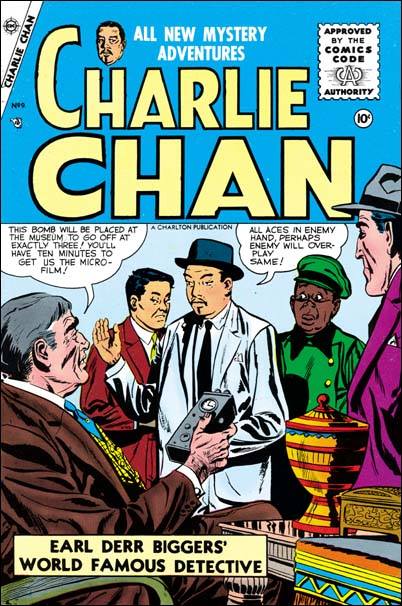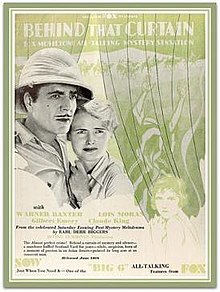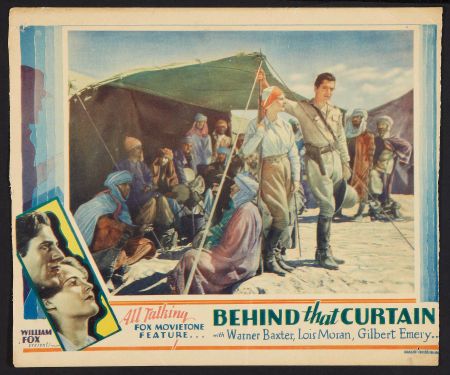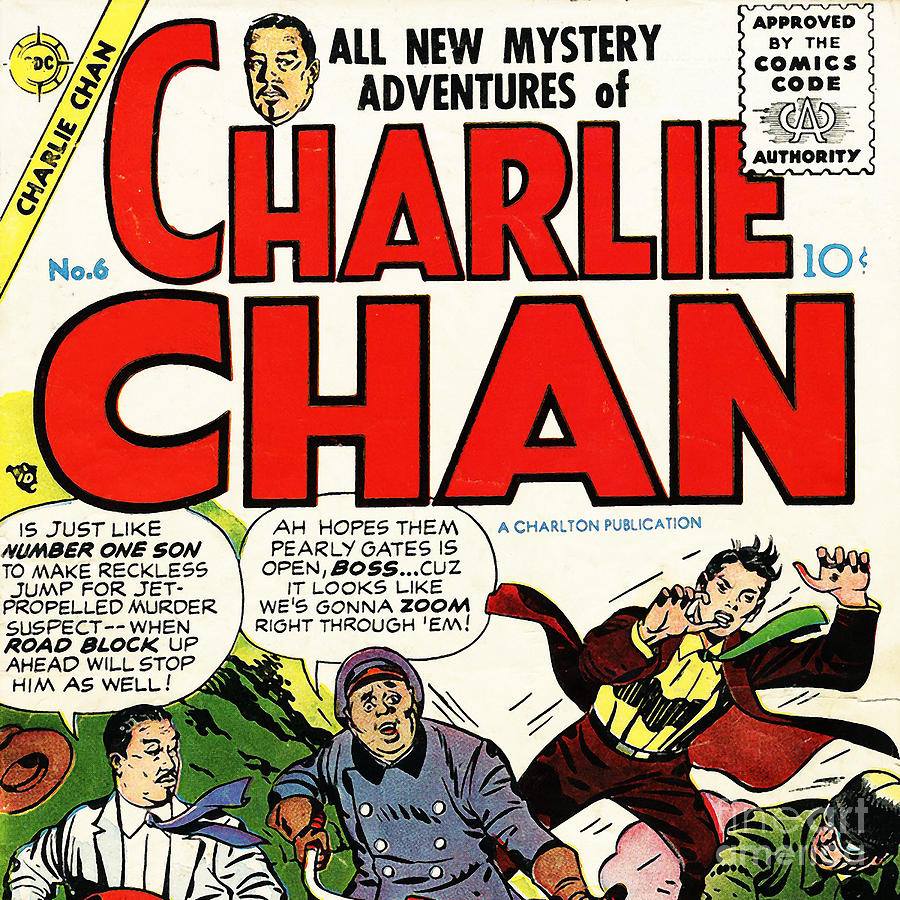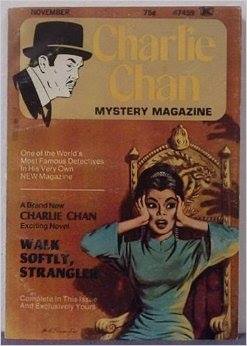Introduction to Charlie
Chan
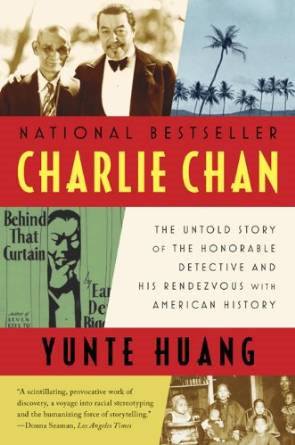
I have been watching a bunch of the Charlie
Chan films and have read most of the mysteries in conjunction with a terrific
book titled Charlie Chan – The Untold Story by Yunte Huang. Huang is from
the Chinese Mainland but went to university in America and one day came upon
a used Charlie Chan mystery by Earl Derr Biggers and became fascinated with
the character and the backstory. He tells an informative tale as he takes
us down many paths to give the books and the films context. By the time Huang
came across the book, Charlie Chan had become a pejorative word in much of
the Asian community for various reasons but primarily because of the fact
that on screen Charlie Chan was almost always played in “yellow face” and
that his character was in their eyes much too deferential to the white man.
He was labeled a Chinese Uncle Tom. This is how he was described in one essay
– “In the eyes of many Asian Americans, Charlie Chan is in essence an effeminate,
wimpy, nerdy, inscrutable Asian male, who helped plant the seed of the pervasive
racist stereotype of Asian Americans as the model minority”. These groups
forced TV to stop showing the films and made him into a Politically Incorrect
icon in our culture. The author pushes back on this judgement.
And after watching the films and reading the books I would have to generally
agree with him. It is becoming ever more common to view past figures, films
and books through our modern day lens and that to me is somewhat unfair.
That was then and this is now. No doubt in 100 years what we do now will
seem far out of step as well. So I look at Charlie Chan as a reflection of
his times. Racism pervaded everything (and to some degree still does) and
that prejudice showed up in films of all kinds right up until current times.
That doesn’t make it right, but that is the way it was. The Birth of a Nation
is still considered one of the great film masterpieces, but it is complete
racist propaganda. No doubt I see things through my white prism but I have
never looked at Charlie Chan in a negative stereotype manner. Sure his character
was almost always played by a white actor (other than two Japanese actors
in the very early silent Chan films) as were almost all major Asian characters
in films back then, but the character himself is a wonderful concoction of
wisdom, humor, humility and humanity.
During a period of great xenophobia in which Congress passed the Immigration
Act in 1924 that basically only allowed white people to immigrate to America
and in an age where Chinese were almost always portrayed as coolies, criminals,
servants or sadists (i.e. Fu Manchu), Biggers created a Chinese character
who was always the smartest guy in the room. He was also the most decent.
White people are the bad guys, the knaves, the fools, the drunks and the
white police flounder about until Chan in his quiet polite manner tells them
who the killer is. He is a great family man with enough children to field
a baseball team (effeminate? Really?), faces constant danger and attempts
on his life without batting an eye (wimpy, nerdy?) and he is greatly respected
in both the books and films by nearly everyone – whites included. In the
books in particular, Chan emerges as a full character who takes no shit from
anyone. He is constantly giving verbal elbow punches to white people. He
is happy to have people underestimate him and then with a glee in his eye
and a rapier wit show them how stupid they are. Much of this is also displayed
in the movies but Chan is admittedly a more genial character without the
verbal digs but he is still the smartest guy in the room. In truth, the minority
that gets smeared in the Chan movies (but not the books) are blacks who are
always used for comic effect; in particular with actor Mantan Moreland who
showed up in a number of the Sidney Toler/Roland Winter Charlie Chan films.
Now I have to add that Mantan within the confines of his narrow stereotyped
characters is a comic genius and some of the routines he comes up with are
brilliant.
Earl Derr Biggers was born in Ohio in 1884, first went into journalism where
he didn’t do all that well (oddly similar to Sax Rohmer) and wrote his first
mystery Seven Keys to Baldplate in 1913. It was an immediate success even
being turned into a play and in the next few years he wrote other mysteries
that made him a reasonable wealthy man. In the 1920’s he went on vacation
to Hawaii and came back with an idea for another mystery in The House Without
a Key. It did not initially include Charlie Chan. But he heard about a real
life Chinese detective in Hawaii named Chang Apana who was a legend on the
island and somewhat based on him, he decided to insert a Chinese detective
in a minor role, but who solves it in the end. There was a film made on Apana’s
life titled The Legend of Chang Apana in 2009 starring Cary-Hiroyuki Tagawa.
The Chan character was so popular that Biggers was to write five more novels
with Chan until his death in 1933 from a heart attack.
The books are surprisingly enjoyable. They contain humor, romance and obviously
mystery and suspense and speed along quickly. The aphorisms that Charlie
Chan is famous or infamous for were invented in the books; they are not film
creations and though clearly odd and I suppose looked on as faux Chinese
charm, they do become rather endearing after a while. There have been books
published just containing his aphorisms from the books and films. “Slippery
man sometimes slip in own oil”, “Talk cannot cook rice”, “No poison more
deadly than ink”, “Mind like parachute only functions when open” are a few
of many. The books get progressively better as Charlie increasingly takes
on a bigger role in them. In the end no matter what people have said or how
the character has been denigrated, Charlie Chan is as much an icon as any
of the great detective fictional characters of our time. Besides the books
and films, there were also Charlie Chan comic books, Charlie Chan card games
and a Charlie Chan TV show.
Chang Apana and Warner Oland
From 1926-1947 there were 47 Charlie Chan films produced. The first ones
followed the books but after Biggers died they brought in writers to come
up with screenplays. The first three were silent films and did not do all
that well at the box office but beginning with Warner Oland’s first film
Charlie Chan Carries On (a lost film as are a few others) Fox Studios had
a very popular series on its hands that made big profits. Oland was to make
16 Charlie Chan films and on one occasion he visited China to great fanfare.
They loved Charlie Chan in China and even made a few of their own Chan films.
After Oland passed away the mantle of playing Chan went to Sidney Toler.
Toler was to make eleven Chan films for Fox but then when Fox decided to
cancel the series, Toler got the rights to the character and went to the
low-budget studio Monogram Studios and made eleven more until his death in
1947. Roland Winters then took over for six films until the Charlie Chan
films ended in 1947. Both Oland and Toler are very good as Chan; Winters
less so.
The films allowed a number of American-Chinese actors to get started in Hollywood
– Keye Luke who appeared in many of the Warner Oland films as son number
one went on to a very lengthy career playing the first Kato and later Master
Po on the Kung Fu series, Victor Sen-yung was son number two in many of the
Sidney Toler films and went on to play in loads of TV (Kung Fu and on Bonanza
as Hop Sing ) and films, Benson Fong who played one of Chan’s sons in a few
films and went on to play in many TV shows up till his death in 1987 and
also in films such as Flower Drum Song. Though Charlie was always played
by a white man with his eyes tucked back, his many children and wife were
always played by Chinese actors.
Huang goes into all of this of course with a huge sweep of history, covering
the history of Hawaii, the Chinese immigration from southern China to Hawaii,
the life of Chang Apana, the history of the Chinese in America and the prejudice
they faced and how they were portrayed in books, film and song and of course
the books and films of Charlie Chan. The book is an excellent read and a
look at the past that I knew very little about. The truly sad thing about
Charlie Chan as far as I am concerned is not Charlie Chan and how he was
portrayed but that since him there have been no other major Chinese characters
in film or TV in the USA. Nothing came after Charlie Chan and that is what
should outrage. Would a Charlie Chan film played by a Chinese actor do well
today?
Behind that Curtain (1929) – 4.0
This is the first sound Charlie Chan film, based on a novel from Earl
Derr Biggers. Charlie Chan is in it for about three minutes near the end.
For their own reasons the scriptwriters and Fox who had just acquired the
rights to the Charlie Chan books turned the book inside out. It is one of
my favorite Chan books - there were only six of them before Biggers passed
away. It is convoluted and confusing and a great mystery novel that takes
place nearly entirely in San Francisco - but the roots of the crime go back
sixteen years to a murder in London and then the disappearance of a woman
in India. That story slowly is revealed in the novel but the writers make
that the main story and the mystery non-existent and the San Francisco section
very brief. So it becomes this rather tawdry melodramatic romance that is
dull. I saw this on YouTube.
Chan is played by E.L. Park, a Korean-American. IMDB has no other credits
for him. Interestingly, before Chan began to be played by white men in Yellow
Face, he had been played by three Asians – George Kuwa who was Japanese in
The House Without a Key (1926), Kamiyama Sojin, another Japanese played Chan
in The Chinese Parrot in 1927 (which also had Kuwa and Anna May Wong in it
in small roles) and this film. The only times I know of Chan being played
by a Chinese actor were the five made in Shanghai in the 1930s where Chan
is played by Xu Xinyuan. As far as I know those are all lost. In these early
Chan films the Hawaiian detective only had a small amount of screen time.
This reflected to some degree the early Bigger novels. As the popularity
of Chan increased, so did his importance in the books and films.
Behind the Curtain begins in London when Eve Mannering (Lois Moran), a wealthy
heiress, marries Durand against her uncle's wishes. As soon as we hear Durand's
(Philip Strange) nasally affected voice, we know he is a cad and a bounder.
Unfortunately, she doesn't know and she ignores the man who really loves
her, Colonel Beetham played by Warner Baxter. A lawyer who has the goods
on Durand is murdered and a pair of Persian slippers left behind. The Inspector
from Scotland Yard goes to the ends of the earth to solve the murder - the
desert scenes shot in Death Valley. The drama eventually moves from India
and Persia to San Francisco where Charlie Chan enters the film but everyone
already knows who the killer is. In the book there were a load of suspects
all locked up in a large apartment. This is 1929 just as talking films came
in and this suffers from that - most of the acting is pedestrian or overly
done - but it has a few interesting aspects - one with Eve running through
SF along busy streets in one take and while in India it is more than hinted
at that Durand is bedding his busty Indian servant. It also plays some interesting
local music. Finally, Beetham's loyal servant is none other than Boris Karloff
- with not a lot of screen time but some nice close-ups.
Beginning with the next Chan film, Charlie Chan Carries On, Warner Oland
took over the role and it was white men from then on. But even in this film
Chan never appears until more than halfway through the film. The film (lost
now) was very successful and so was the character of Chan and with the next
film, The Black Camel (1931), Chan became the main character. Both The House
Without a Key and The Chinese Parrot are lost films. As are sadly four of
the first five ones with Oland – Charlie Chan Carries On, Charlie Chan’s
Chance, Charlie Chan’s Greatest Case and Charlie Chan’s Courage.
Eran Trece (1931) – 6.0
Aka - They Were Thirteen
This is an interesting oddity. A Charlie Chan film in Spanish. It was
made by Fox at the same time as Charlie Chan Carries On starring Warner Oland.
That was Oland's first Charlie Chan film but it is considered a lost film.
But from what I have read it is almost exactly the same film as this - just
with different actors. This one is directed by a fellow named David Howard,
who went on to direct a number of B Westerns but before that he made seven
Spanish language films for Fox. This is what studios often did back then
for an international audience until dubbing in languages became more common.
He was born in Philadelphia but perhaps he spoke Spanish and got tagged with
these Spanish films. Some at least seem to have been made alongside the English
version such as this one and Cuerpo y Alma which was Body and Soul. In total
there have been three Spanish language films of Chan.
This is certainly on the same level as most of the Charlie Chan films - which
may not say a lot - but since it is using the same sets I guess that would
make sense. The quality of the acting is fine and so is the plot with a number
of murders by an unseen hand. Chan doesn't actually enter the film till the
45 minute mark of a 79 minute film. It begins in London where a man is found
strangled in his bed and Scotland Yard is on the case in the form of Inspector
Duff (Rafael Calvo). The murdered man was part of a group of thirteen tourists
doing a world tour. More murders occur and the group finally gets to Honolulu
and when Duff shows up to ask his friend Charlie for help, he is shot and
Charlie carries on by taking the last part of the trip on a boat to San Francisco.
There are no clues that we are supposed to pick up - but Charlie traps the
killer through an old trick.
Chan is played by Manuel Arbo from Spain. So still not an Asian actor, but
like the American films, the son is Asian but is only in this for a minute.
Arbo is fine - a very quiet Chan, deferential of course who slings around
aphorisms like drinks at a cocktail party. But I quite liked him and was
hoping he had starred in a few other Chan films but that doesn't seem to
be the case. He went on to a very lengthy career in Spain with over 200 credits.
So this was fun - and it is up on YouTube under Charlie Chan Carries On -
but look for the 79 minute version - the quality is excellent.


